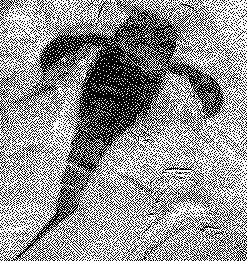 Return
Return
Eurypterus

A typical genus of Paleozoic eurypterid arthropod whose body consists of an anterior region ( prosoma ) of subtrapezoisal shape and an elongate posterior region. The prosoma has six pairs of appendages: the first pair form the antennae, the next four pairs are masticatory appendages and the last pair, paddle- shaped, are for swimming. Compound eyes occupy a dorsal position. The posterior part of the body consists of an abdomen, or opisthosoma, divided into twelve segments, the first of which are wide then gradually tapering toward the rear, at the posterior extremity an elongate telsom forms a robust spine.
Note--
Eurypteridae were marine or brackish water organisms that enjoyed a rapid development from the upper Silurian to the Lower Devonian. They include the largest known arthropod forms; speciments have been discovered measuring as much as 2 meters. They were mainly benthonic, but there were also several free-swimming forms. They were all carnivorous predators, feeding off any type of prey they could exploit, including primitive ostracoderms.
Copyright 1986 by Arnoldo Mondadori Editore S.p.A, Milan
.
 Return
Return
